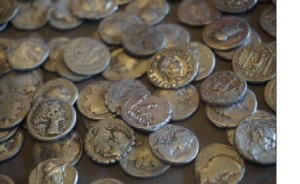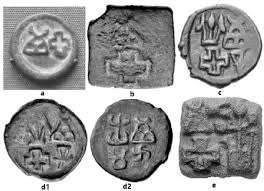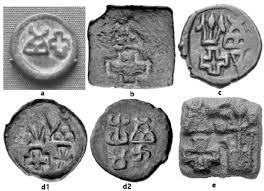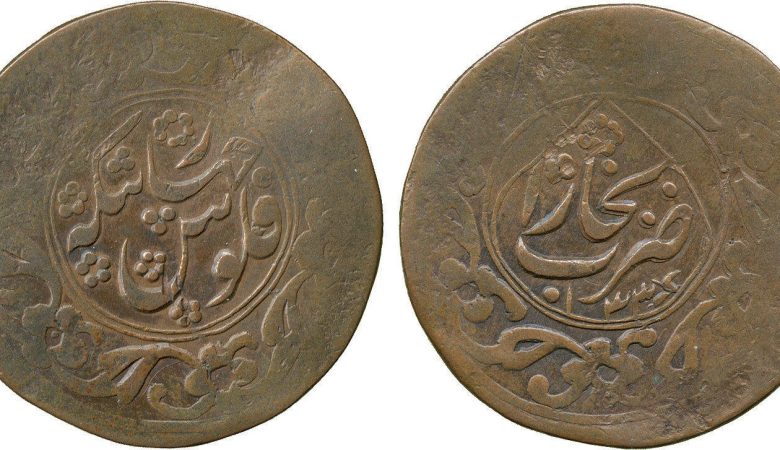Introduction:
In everyday transactions, coins are sometimes disregarded, despite their significant historical, cultural, and artistic value. The ability of these tiny, metallic objects to tell the story of many civilizations, economic systems, and artistic expressions is acknowledged by museums all over the world. In the sacred corridors of museums, the currency assumes a role beyond that of a mere instrument of transaction. The many functions of coins in museums are examined in this article, along with their cultural significance, historical background, and contributions to a deeper knowledge of human culture.
The Historical Canvas:
Coins are real relics from the past that provide us with a window into the social, political, and economic environments of earlier times. With its unique design, each coin has the stamp of the community that produced it, serving as a historical representation of the ideals, beliefs, and goals of a civilization.
- Chronicles of Empires: Coins are quiet observers of civilizations coming and going. The Greek drachma, the Byzantine solidus, and the Roman denarius all depict stories of trade routes, victories, and the magnificence of bygone eras. Historians utilize numismatics to reconstruct historical events, including changes in rulership, economic policies, and geopolitical upheavals.
- Medieval Trade and Renaissance Splendor: Trade and cross-cultural interaction saw a revival during the Middle Ages and the Renaissance. This era’s coins include elaborate designs that celebrate the wealth and creative accomplishments of the day. For instance, the Italian florin not only promoted trade throughout the Renaissance but also displayed the thriving arts.
coins kept in museums are valuable artifacts that have significance beyond their market value. These serve as historical portals, cultural archives, and educational materials. These small metal discs act as storytellers of history, providing a tangible connection to the societies that built Earth. Through exhibitions, educational initiatives, and conservation efforts, museums play an important role in ensuring that the richness of numismatics inspires and educates future generations. Numismatics has the ability to connect people from different eras and confirms the enduring importance of coins to human culture and history.
Cultural Significance:
Beyond their historical significance, coins are cultural objects that represent a society’s symbols, beliefs, and creative expressions. Coin designs and inscriptions provide windows into a people’s collective identity and cultural legacy.


- Symbolism and Iconography: Coin designs are rich in symbolism, embodying a culture’s ideals and principles. Images of monarchs, allegorical characters, and national insignia all communicate ideas of strength, solidarity, and identity. For example, the U.S. quarter has famous people like George Washington, whereas the Indian rupee has the Ashoka Chakra, a symbol of law and dharma.
- Religious and Mythological Motifs: Numerous coins have mythical and religious themes that represent a civilization’s spiritual values. While Islamic coins may include Quranic texts or images of important religious places, ancient Greek coins frequently portrayed gods and goddesses.
Educational Tools:
Coins are effective instruments that museums employ to engage visitors and teach them about history, economics, and art. Museums are educational organizations. Numismatics exhibits offer a vibrant and engaging educational experience.
- Interactive Exhibits: Interactive exhibits that let visitors learn about the background and significance of coins are a common element of museums. Multimedia displays, augmented reality, and touchscreens improve the educational process and make numismatics more approachable for a larger audience.
- Educational Programs: Programs for mathematical education serve both hobbyists and students. Insights into the historical backgrounds of coins, the craft of coinage, and the function of currencies in influencing economies and civilizations are provided through workshops, lectures, and guided tours.
Preservation of Cultural Heritage:
To maintain their lifespan, coins need to be carefully preserved because they are delicate relics. Modern facilities and methods are used by museums to preserve these modest but important artifacts from the past.
- Climate-Controlled Environments: Preserving the integrity of coins requires consistent environmental conditions, such as controlled humidity and temperature. Museums make investments in climate-controlled holding and exhibition spaces in order to lessen the effects of temperature changes on coin collections.
- Archival Methods: Museums safeguard coins from the elements by using preservation techniques including encapsulation, framing, and protective cases. These methods defend against chemical reactions that might eventually corrode the metal in addition to physical harm.


Conclusion:
In conclusion, coins housed in museums are priceless relics that have significance beyond their market worth. They function as historical portals, cultural archives, and teaching aids. These little metal discs serve as historical storytellers and provide a palpable link to the societies that built the planet. Through their displays, educational initiatives, and preservation activities, museums are essential to ensuring that the rich tapestry of coinage enthralls and enlightens future generations. With its capacity to unite people from different eras, numismatics confirms the coins’ continuing importance in human culture and history.




